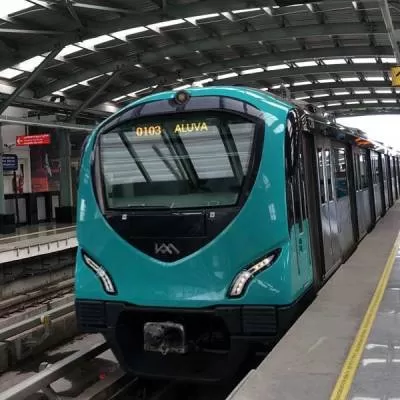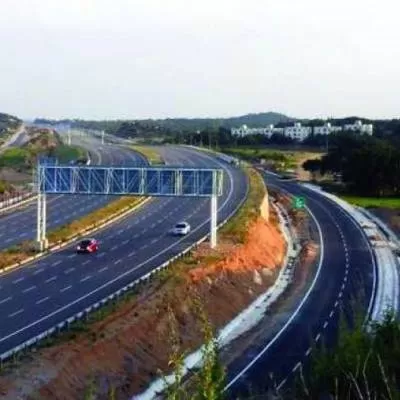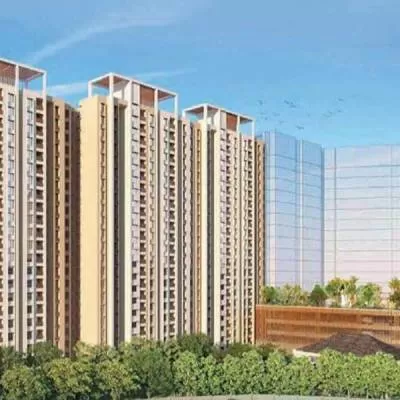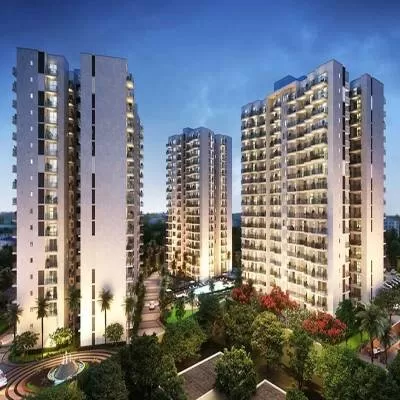- Home
- Real Estate
- Being Cyrus!
Being Cyrus!
Despite their significant contribution to construction, engineers are rarely in the limelight. Thus, on the eve of Engineers' Day on September 15, CW presents a new section on engineers who have made a mark. Janaki Krishnamoorthi begins with civil engineer Cyrus Pithawalla, Director, Hiranandani Constructions Pvt Ltd, Mumbai.
Civil engineers are never in the limelight because they do not get the recognition they deserve," laments Cyrus Pithawalla. "Every structure standing today owes its existence to a civil engineer. We do all the hard work at site, exposing ourselves to heat and dust and yet very little recognition comes our way. Unfortunately, we have not learnt to market ourselves either." But 57yearold Pithawalla is no typical civil engineer. Confident, commanding, aggressive and outspoken, he insists that architects are given undue importance while engineers are relegated to a back seat in many organisations, except at the Hiranandani Group. "Here, engineers are respected and recognised," he declares. "That's why I have stayed with them for 26 years." Pithawalla, a Director at the Group, joined the organisation in 1984 as a senior civil engineer.
For a man who entered civil engineering not by choice but by chance, Pithawalla took to it like a fish to water. "I just love it now," he says and his multifarious projects reveal the magnitude of his earnestness and passion, as does his leap up the professional ladder. "Whatever you do, you should do it from the heart; a passionate attitude and persistence will definitely bring success," advises Pithawalla, who considers renowned civil engineer Anthony Remedios his guru. Remedios, who passed away last year, was a reputed construction consultant to government undertakings and several private developers including the Hiranandanis. "He used many innovative construction techniques and had a typical way of explaining complicated engineering procedures with simple, often humorous, examples. I learnt a lot from him." Pithawalla, who has travelled to Germany, China, Italy, Singapore, Malaysia and Turkey, among other countries, to explore new products and methods of construction, always wants to do "better than the best". He shares his views and experiences with CW:
Civil engineer not by choice
Initially I aspired to be a pilot, but when I realised my father, who was then a foreman in Indian Airlines, would not be able to bear the high costs of the training programme, I opted for mechanical engineering but soon realised it was not my cup of tea. In the first semester, I got seven ATKTs (Allowed to Keep Terms) and in the second, four more. In the third semester, my college principal told me that I was no material for mechanical engineering but had the aptitude for civil engineering. He also warned me that with 11 ATKTs and seven more subjects to study in the third semester, I would have a tough time and if I failed I would be out of engineering totally. But I took it up as a challenge and not only managed to secure 55 per cent that year but also obtained my degree with a distinction. I had little choice at that time of course; I had to jump in the well and then learn to swim. Often we are faced with such situations and we must take the risk.
Guiding principles
I strongly believe in self-motivation, out-of-the-box thinking, multitasking and hard work. I work from 8 am to 11 pm, but in between find time for my family, to watch television, listen to music too. But I cannot switch off from work totally. I also do not believe in saying 'Yes sir' when you know something cannot be done, even if it is your own boss who is asking you to do it. Fear is the key to getting work done out of construction workers. They do not understand any other language. So you have to be aggressive and forceful with labourers and at times even with certain contractors.
Changes in the industry
Several significant changes have taken place in construction techniques, methods and materials since I entered the industry. The advent of readymix concrete (RMC) is one of them and the future no doubt lies in RMC, particularly in cities like Mumbai where little space is available to set up concrete mixers and store raw materials. But as of now I would rather use the concrete produced at my site as RMC supplied by many companies is not consistent in quality. Frequently, owing to addition of excess water or excess super-plasticizer, the concrete delivered does not have the required slump. The transit mixture in which the concrete is brought to site is often not drained or washed properly. As a result, water and remnants of old concrete left behind affect the quality of the fresh concrete.
In the past five years, plumbing techniques have undergone a change. A uniform plumbing code has been worked out by the Indian Plumbing Association that is good, but must be made mandatory. The use of polyvinyl chloride (PVC) pipes has been strengthened with the entry of more brands and pipes of various diameters and a complete range of fittings. For hot water distribution systems, especially for concealed works, alternatives like chlorinated polyvinyl chloride (CPVC), composite, polypropylene random (PPR), multilayer pipes, pex, etc, along with copper and stainless steel are also available. Yet many people still use galvanised iron (GI) as there is a big GI lobby in India today.
The use of fly ash in concrete is yet another significant development. It not only makes concrete more dense and homogenous but also increases the life-span of buildings. It is cost-effective too and the Hiranandanis, who pioneered its use, are the largest consumers of fly ash today in Mumbai. The use of paver blocks has greatly improved road conditions in India. There are different kinds of paver blocks; some for footpaths, some for light traffic and others for heavy traffic. So one should use the right one at the right place and they should be installed properly. Otherwise they will get dislodged as is happening in some Mumbai roads.
Dearth of trained manpower
There is a heavy shortage of trained manpower in several areas as many institutes, including our engineering colleges, provide only theoretical knowledge. Some diploma courses provide practical training but it is insufficient. Practical training must be incorporated in the curriculum of every engineering and allied course. In addition, every developer should have an inhouse training unit. Even developers and builders must be educated on various aspects of civil engineering.
Portfolio
Pithawalla, who has been in the construction industry for over 35 years, has handled a diverse range of projects in India and abroad ranging from a water filtration plant and refuse transfer stations to port development works, hospitals, hotels, schools, malls, residential and commercial buildings. Some of his remarkable projects are the world's largest water filtration plant at Bhandup, Mumbai; one of Asia's longest residential buildings, Lake Castle, Powai; and Dr LH Hiranandani Hospital in Powai with a basement that has been made water-resistant not through waterproofing but by following good construction practices. In this basement, a retrofit Linac room (radiation room) for cancer patients is under construction. Apart from the technical challenges, this project also poses the practical difficulty of working without hampering the functioning of a full-fledged hospital. A mock up of the Linac room was first created and the actual construction was undertaken only after rectifying the shortcomings.
Cyrus Pithawalla: Highlights
• BE (Civil) from Sardar Patel College of Engineering, Andheri, Mumbai.
• Site Engineer, Binnie & Partners (India) Ltd for construction of water filtration plant at Bhandup, Mumbai.
• Project Engineer, Saeed Kalpataru Construction, Yemen, for construction of Sanaa Refuse Disposal Project and Hodeidah Port development works.
• Senior Engineer, GL Raheja & Associates, Mumbai, for varied constructions including a hospital in Bandra, Mumbai.
• Project Engineer, Lokhandwala Constructions, Mumbai, for construction of residential buildings and row houses.
• Hiranandani Constructions, Mumbai, as Senior Civil Engineer and later Director, handling a wide range of projects.
Recognition:
• 2004: Felicitated by American Concrete Institute for firebrand approach to quality, hard work and time schedule.
• 2003: Senior Talented Site Engineer Award from Indian Concrete Institute, Builders' Association of India, and Gujarat Ambuja Cement for construction of basement without waterproofing at Dr LH Hiranandani Hospital.
Challenging projects:
Project: Fivefloor office building in a port
Location: Hodeidah, Yemen
Owner: Government of Yemen
Contractor: Saeed Kalpataru Construction Company
Period: 1980-1981
Project details: About 120 precast arches had to be lifted by crane and placed in appropriate locations in the building, some at a height of about 18 m.
Challenges: Precast arches were uncommon in those days and hence not many had the expertise to handle it. Five Indian engineers had already quit the job. However, Pithawalla completed it successfully and finished the project six months ahead of schedule. "It was no doubt risky and involved hard work," he says with pride. "The crane operator was reluctant to take it up and I had to sit in the crane and guide him. I slept at site for three nights in makeshift beds to supervise the work. When the job was completed, the international consultants felicitated me, which was a pleasant surprise."
Project: Lake Castle, residential building
Location: Hiranandani Gardens, Powai
Period of construction: 19911994
Unique features: One of Asia's longest (600 ft) buildings with four blocks integrated into one with three expansion joints and two huge rectangular cutouts built in a long and narrow plot of about 15 lakh sq ft. The number of floors varied with 21 being the maximum.
Challenge: It had a stepped profile with projections, balconies and terraces on every floor. There was nothing typical about it; everything in the building including plumbing lines had to keep going in and coming out and drawings changed at every step. There was a columnfree deep beam on top of a cutout on which stands a sevenstorey building. From the back it looks like a ship and from the front, like the Great Wall of China. "We had to be very alert at every point as there was a high risk of the back and front getting reversed, like it happened with the Taj Mahal Hotel where the back became the front and the front became the back and the architect committed suicide," reveals Pithawalla.
- Construction
- Update
- Portal
- Magazine
- India
- September
- 2010
- World
- engineers
- Cyrus Pithawalla
- Hiranandani
- Mumbai
- Civil
- architects
- Anthony Remedios
- Germany
- China
- Italy
- Singapore
- Malaysia
- Turkey
- RMC
- transit
- mixture
- Plumbing
- Association
- CPVC
- PPR
- traffic
- Road
- water
- filtration
- Mumbai
- Lake Castle
- Hospital
- water-resistant
- Linac
- Yemen
- Hodeidah
- Port
- Lokhandwala
- Gujarat
- Ambuja
- Cement
- China
Despite their significant contribution to construction, engineers are rarely in the limelight. Thus, on the eve of Engineers' Day on September 15, CW presents a new section on engineers who have made a mark. Janaki Krishnamoorthi begins with civil engineer Cyrus Pithawalla, Director, Hiranandani Constructions Pvt Ltd, Mumbai. Civil engineers are never in the limelight because they do not get the recognition they deserve, laments Cyrus Pithawalla. Every structure standing today owes its existence to a civil engineer. We do all the hard work at site, exposing ourselves to heat and dust and yet very little recognition comes our way. Unfortunately, we have not learnt to market ourselves either. But 57yearold Pithawalla is no typical civil engineer. Confident, commanding, aggressive and outspoken, he insists that architects are given undue importance while engineers are relegated to a back seat in many organisations, except at the Hiranandani Group. Here, engineers are respected and recognised, he declares. That's why I have stayed with them for 26 years. Pithawalla, a Director at the Group, joined the organisation in 1984 as a senior civil engineer. For a man who entered civil engineering not by choice but by chance, Pithawalla took to it like a fish to water. I just love it now, he says and his multifarious projects reveal the magnitude of his earnestness and passion, as does his leap up the professional ladder. Whatever you do, you should do it from the heart; a passionate attitude and persistence will definitely bring success, advises Pithawalla, who considers renowned civil engineer Anthony Remedios his guru. Remedios, who passed away last year, was a reputed construction consultant to government undertakings and several private developers including the Hiranandanis. He used many innovative construction techniques and had a typical way of explaining complicated engineering procedures with simple, often humorous, examples. I learnt a lot from him. Pithawalla, who has travelled to Germany, China, Italy, Singapore, Malaysia and Turkey, among other countries, to explore new products and methods of construction, always wants to do better than the best. He shares his views and experiences with CW: Civil engineer not by choice Initially I aspired to be a pilot, but when I realised my father, who was then a foreman in Indian Airlines, would not be able to bear the high costs of the training programme, I opted for mechanical engineering but soon realised it was not my cup of tea. In the first semester, I got seven ATKTs (Allowed to Keep Terms) and in the second, four more. In the third semester, my college principal told me that I was no material for mechanical engineering but had the aptitude for civil engineering. He also warned me that with 11 ATKTs and seven more subjects to study in the third semester, I would have a tough time and if I failed I would be out of engineering totally. But I took it up as a challenge and not only managed to secure 55 per cent that year but also obtained my degree with a distinction. I had little choice at that time of course; I had to jump in the well and then learn to swim. Often we are faced with such situations and we must take the risk. Guiding principles I strongly believe in self-motivation, out-of-the-box thinking, multitasking and hard work. I work from 8 am to 11 pm, but in between find time for my family, to watch television, listen to music too. But I cannot switch off from work totally. I also do not believe in saying 'Yes sir' when you know something cannot be done, even if it is your own boss who is asking you to do it. Fear is the key to getting work done out of construction workers. They do not understand any other language. So you have to be aggressive and forceful with labourers and at times even with certain contractors. Changes in the industry Several significant changes have taken place in construction techniques, methods and materials since I entered the industry. The advent of readymix concrete (RMC) is one of them and the future no doubt lies in RMC, particularly in cities like Mumbai where little space is available to set up concrete mixers and store raw materials. But as of now I would rather use the concrete produced at my site as RMC supplied by many companies is not consistent in quality. Frequently, owing to addition of excess water or excess super-plasticizer, the concrete delivered does not have the required slump. The transit mixture in which the concrete is brought to site is often not drained or washed properly. As a result, water and remnants of old concrete left behind affect the quality of the fresh concrete. In the past five years, plumbing techniques have undergone a change. A uniform plumbing code has been worked out by the Indian Plumbing Association that is good, but must be made mandatory. The use of polyvinyl chloride (PVC) pipes has been strengthened with the entry of more brands and pipes of various diameters and a complete range of fittings. For hot water distribution systems, especially for concealed works, alternatives like chlorinated polyvinyl chloride (CPVC), composite, polypropylene random (PPR), multilayer pipes, pex, etc, along with copper and stainless steel are also available. Yet many people still use galvanised iron (GI) as there is a big GI lobby in India today. The use of fly ash in concrete is yet another significant development. It not only makes concrete more dense and homogenous but also increases the life-span of buildings. It is cost-effective too and the Hiranandanis, who pioneered its use, are the largest consumers of fly ash today in Mumbai. The use of paver blocks has greatly improved road conditions in India. There are different kinds of paver blocks; some for footpaths, some for light traffic and others for heavy traffic. So one should use the right one at the right place and they should be installed properly. Otherwise they will get dislodged as is happening in some Mumbai roads. Dearth of trained manpower There is a heavy shortage of trained manpower in several areas as many institutes, including our engineering colleges, provide only theoretical knowledge. Some diploma courses provide practical training but it is insufficient. Practical training must be incorporated in the curriculum of every engineering and allied course. In addition, every developer should have an inhouse training unit. Even developers and builders must be educated on various aspects of civil engineering. Portfolio Pithawalla, who has been in the construction industry for over 35 years, has handled a diverse range of projects in India and abroad ranging from a water filtration plant and refuse transfer stations to port development works, hospitals, hotels, schools, malls, residential and commercial buildings. Some of his remarkable projects are the world's largest water filtration plant at Bhandup, Mumbai; one of Asia's longest residential buildings, Lake Castle, Powai; and Dr LH Hiranandani Hospital in Powai with a basement that has been made water-resistant not through waterproofing but by following good construction practices. In this basement, a retrofit Linac room (radiation room) for cancer patients is under construction. Apart from the technical challenges, this project also poses the practical difficulty of working without hampering the functioning of a full-fledged hospital. A mock up of the Linac room was first created and the actual construction was undertaken only after rectifying the shortcomings. Cyrus Pithawalla: Highlights • BE (Civil) from Sardar Patel College of Engineering, Andheri, Mumbai.• Site Engineer, Binnie & Partners (India) Ltd for construction of water filtration plant at Bhandup, Mumbai. • Project Engineer, Saeed Kalpataru Construction, Yemen, for construction of Sanaa Refuse Disposal Project and Hodeidah Port development works.• Senior Engineer, GL Raheja & Associates, Mumbai, for varied constructions including a hospital in Bandra, Mumbai.• Project Engineer, Lokhandwala Constructions, Mumbai, for construction of residential buildings and row houses. • Hiranandani Constructions, Mumbai, as Senior Civil Engineer and later Director, handling a wide range of projects. Recognition: • 2004: Felicitated by American Concrete Institute for firebrand approach to quality, hard work and time schedule. • 2003: Senior Talented Site Engineer Award from Indian Concrete Institute, Builders' Association of India, and Gujarat Ambuja Cement for construction of basement without waterproofing at Dr LH Hiranandani Hospital. Challenging projects: Project: Fivefloor office building in a port Location: Hodeidah, Yemen Owner: Government of YemenContractor: Saeed Kalpataru Construction CompanyPeriod: 1980-1981Project details: About 120 precast arches had to be lifted by crane and placed in appropriate locations in the building, some at a height of about 18 m. Challenges: Precast arches were uncommon in those days and hence not many had the expertise to handle it. Five Indian engineers had already quit the job. However, Pithawalla completed it successfully and finished the project six months ahead of schedule. It was no doubt risky and involved hard work, he says with pride. The crane operator was reluctant to take it up and I had to sit in the crane and guide him. I slept at site for three nights in makeshift beds to supervise the work. When the job was completed, the international consultants felicitated me, which was a pleasant surprise. Project: Lake Castle, residential building Location: Hiranandani Gardens, PowaiPeriod of construction: 19911994Unique features: One of Asia's longest (600 ft) buildings with four blocks integrated into one with three expansion joints and two huge rectangular cutouts built in a long and narrow plot of about 15 lakh sq ft. The number of floors varied with 21 being the maximum.Challenge: It had a stepped profile with projections, balconies and terraces on every floor. There was nothing typical about it; everything in the building including plumbing lines had to keep going in and coming out and drawings changed at every step. There was a columnfree deep beam on top of a cutout on which stands a sevenstorey building. From the back it looks like a ship and from the front, like the Great Wall of China. We had to be very alert at every point as there was a high risk of the back and front getting reversed, like it happened with the Taj Mahal Hotel where the back became the front and the front became the back and the architect committed suicide, reveals Pithawalla.























